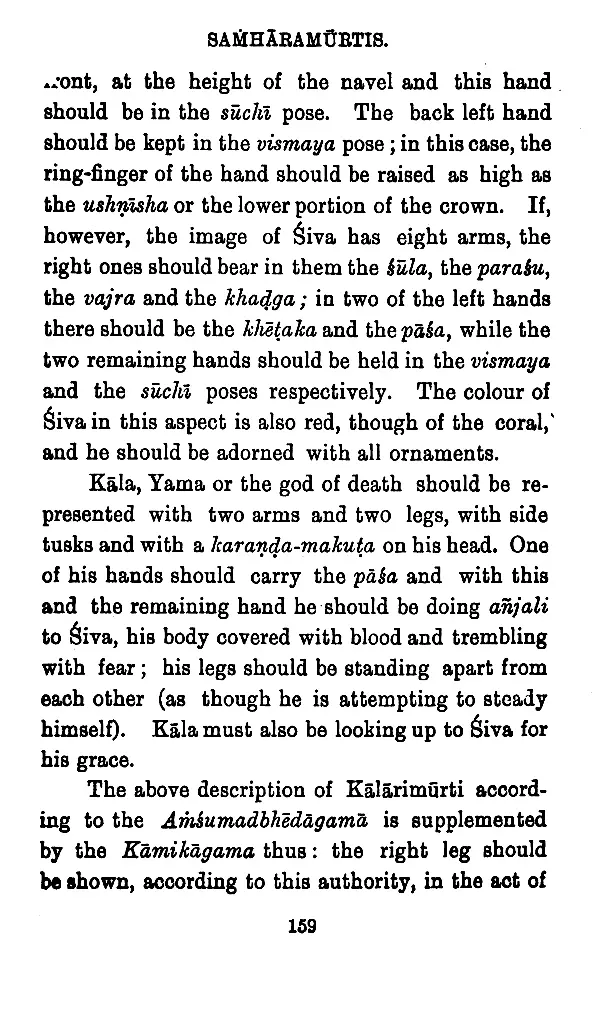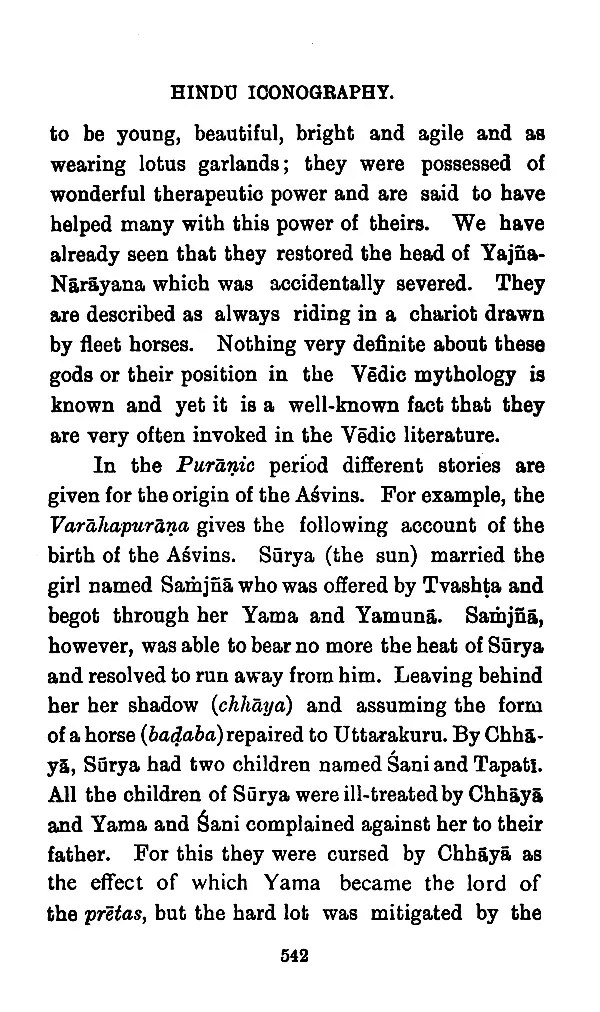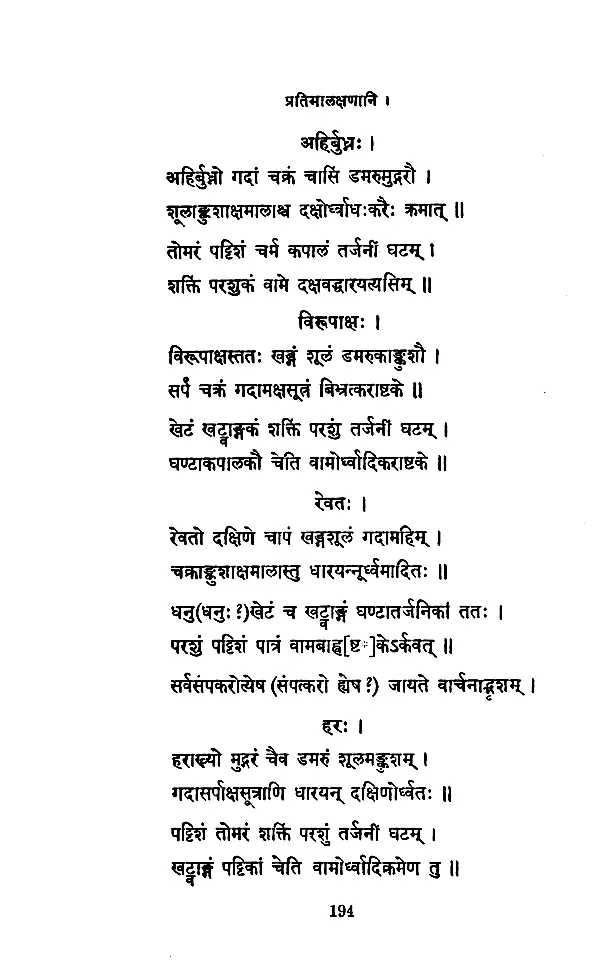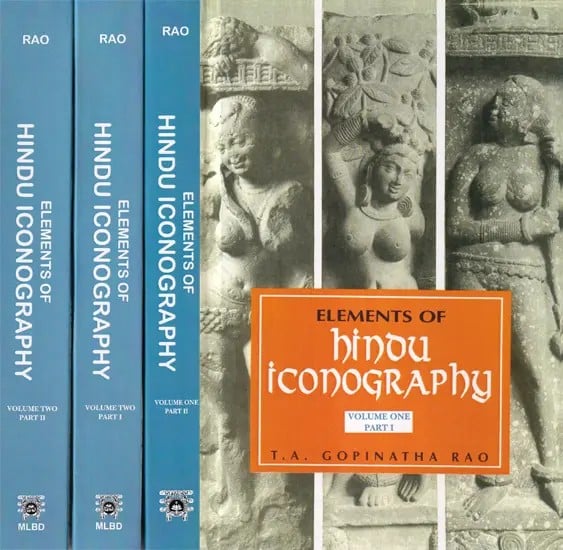
| Specifications |
| Publisher: MOTILAL BANARSIDASS PUBLISHERS PVT. LTD. | |
| Author T. A. Gopinatha Rao | |
| Language: English and Sanskrit | |
| Pages: 1664 (Throughout B/w Illustrations) | |
| Cover: HARDCOVER | |
| 9 X 6 inch | |
| Weight 2.53 kg | |
| Edition: 2023 | |
| ISBN: Vol.-1: 9788120808782Vol.-2: 9789356763500 | |
| NAB008 |
| Delivery and Return Policies |
| Ships in 1-3 days | |
| Returns and Exchanges accepted within 7 days | |
| Free Delivery |
Divided into seven parts (bound in 2 vols.) the work depicts the Hindu Temple as a symbol of aspirations of pious men and women. The first four parts are devoted to the philosophy of temple architecture. Part V deals with the origin and development of the art from the Vedic fire altar to the latest form. Part VI discusses the pyramidal and curvilinear superstructure in the main varieties of the Sikhara. Part VII describes the proportional measurements, the rhythmic disposition of the garbhag?ha. It discusses the proportions of the Mandapa and the types of temple described in ancient Sanskrit Texts.
THE tall spire of the Hindu temple is one of the first objects to arrest the attention of the observant foreigner and excite his curiosity as he travels through India. On going into the temple, he meets with a number of what may perhaps appear to him to be grim and meaningless images, in stone and bronze and other materials, some with two, others with four or more arms, holding a variety of weapons and other more or less curious articles in their hands. The man on the spot may tell him on enquiry that one of those images is the figure of Vishnu, the god of protection, another that of Siva, the god of destruction, and so on, about the innumerable gods and goddesses comprised within the tolerant and all-inclusive fold of the Hindu religion. Some such foreigner, more curious than others of his kind, is sometimes tempted to study these images somewhat carefully, find out their number and characteristics, and gather the legends relating to them from the Puranas and other sources, as also from the learned natives of the country well versed in their religious and mythological lore. Then at last he may come out with his volume on the Hindu gods, on Hindu mythology and other kindred subjects. Such in fact are most of the books that have been written hitherto by foreign authors on topics relating to Hindu Iconography.
It is exactly two hundred years since Ziegenbalg, the famous Danish missionary of Tranquebar, wrote his work on the "Genealogy of the South Indian Gods," with the aid of the information he gathered from some people of the Tamil land. In the year 1785 the book known as "Sketches of the Mythology and Customs of the Hindus" was brought out by George Foster. Moore's "Hindu Pantheon", with illustrations, was first printed in 1810, and then reprinted by Messrs. Higginbotham & Co., of Madras, in 1864, with notes from the pen of the Rev. W.O. Simpson. "Ancient and Hindu Mythology", a work written sympathetically and in defence of the views of the Hindus, with a large number of extracts from the Puranas and other Hindu scriptural sources, was thereafter brought out by Col. Vans Kennedy in 1831. Another work named "A Classical Dictionary of Hindu Mytho- logy" was published by John Dowson in 1879.
THE origin of image worship in India appears to be very ancient and its causes are not exactly known. Many believe it to be the result of the followers of Gautama Buddha adoring their master and worshipping him in the form of images on his apotheosis after death. However, there are indications of the prevalence of image worship among the Hindus long before the time of Gautama Buddha. The employment of an external object to concentrate the mind upon in the act of meditation in carrying on the practice of Yoga is in India quite as old as Yoga itself. Patanjali defines dharana or fixity of attention as "the process of fixing the mind on some object well defined in space." This process is, as he says, "of two kinds, in consequence of this defined space being internal or external. The external object, defined in space consists of the circle of the navel (the nabhichakra), the heart and so on. The fixing the mind thereon is merely directing its existence to be there." There is indeed ample evidence to show that the practice of Yoga is in this country much older than the time of Patanjali. Vachas- pati Misra, a commentator on Vyasadeva's Bhashya on Patanjali's Yoga-Sutras, mentions a great sage Hiranyagarbha as the founder of the Yoga doctrine, which, he adds, was simply improved upon and promulgated by Patanjali, as evidenced by the use of the word anusasanam in Patanjali's first aphorism Atha yoganusasanam. This old sage Hiranyagarbha and his successor Varshaganya Yajnavalkya are alluded to by Ramanuja and other later teachers of Vedanta; and Sankara actually quotes some Yoga aphorisms which are not found in the work of Patanjali, but look older than his time. It is therefore clear that image worship among the Hindus was contemporaneous with, if not older than, the development of the Yoga system, which, as we have seen, dates from before the age of Patanjali, who has been assigned by scholars on good evidence to the second century before Christ.






















































Send as free online greeting card

Visual Search